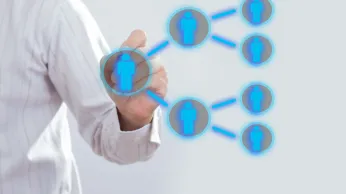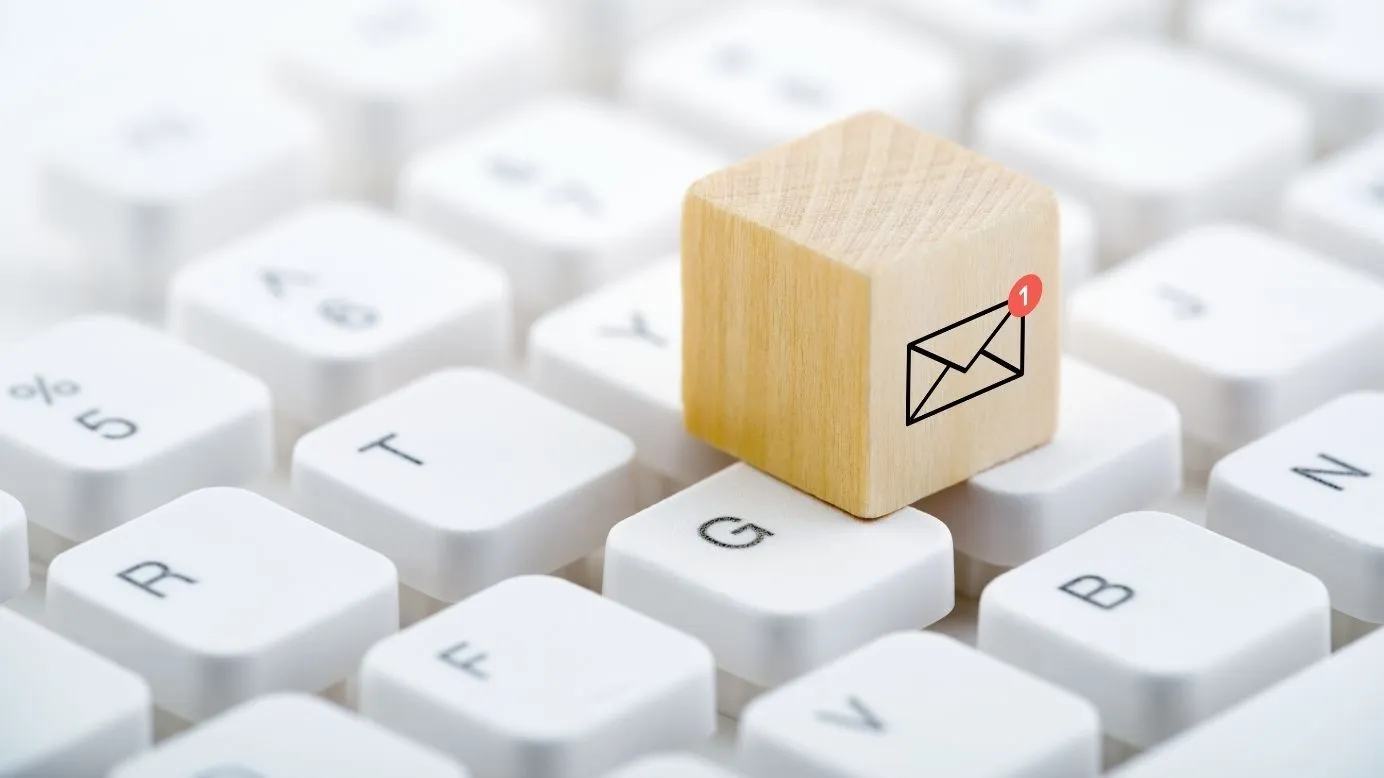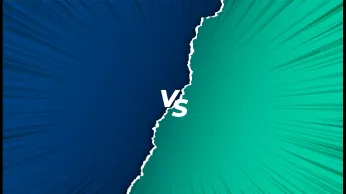نموذج AIDA في التسويق: كيفية زيادة التحويلات في كل مرحلة باستخدام المكافآت
هل تكافح للحفاظ على تفاعل العملاء المحتملين؟ يساعد نموذج AIDA في توجيه العملاء المحتملين خلال رحلتهم، ولكن إضافة المكافآت يمكن أن تزيد من التحويلات. اكتشف كيفية استخدام الحوافز الاستراتيجية في كل مرحلة - الاهتمام والاهتمام والرغبة والتصرف - لجذب العملاء المحتملين والاحتفاظ بهم وتحويلهم بفعالية.
في هذه الصفحة
معظمنا يفهم الإحباط من فقدان الصدارة بعد العمل الجاد للحصول عليها في المقام الأول.
على الرغم من بذل قصارى جهدنا للحفاظ على تفاعل العملاء المحتملين طوال رحلة المشتري ، فإننا نفقد الاتصال بهم أحيانا. والأسوأ من ذلك ، حتى عندما نتمكن من الحفاظ على انتباه العميل المحتمل حتى النهاية ، ما زلنا نميل إلى التقصير عندما يتعلق الأمر بإغلاقه كعميل جديد.
The key here is to keep clients engaged throughout the buyer's process. By leveraging the power of AIDA marketing model and rewards, you can surely level up your conversions.
While the AIDA model might help you understand your buyers' needs through different customer journey stages, rewards will give an added advantage to woo prospects towards you.
This blog will help you understand AIDA marketing model in depth and how to apply it in your digital marketing funnel.
What is the AIDA marketing model?
The AIDA Model has been an efficient digital marketing model for ages. It has helped businesses increase their sales. Attention, interest, desire, and action: The four components of the AIDA model form the backbone of many great marketing strategies.
Brands use the AIDA model to identify how to design and deliver valuable information to the right people at each step of the buying process.
The 4 stages of the AIDA model
دعونا نفهم المراحل المختلفة ل AIDA بمزيد من التفصيل.
1. أ (انتباه)
إنه المستوى الأول لنموذج AIDA.
في البداية ، من غير المرجح أن ينتبه عميلك المحتمل إلى منشورات شركتك. وبالتالي ، فإن هدفك كمسوق هو زيادة الوعي بمنتجك أو خدمتك بين العملاء المحتملين المستهدفين. بهذه الطريقة ، سيفهم المستهلكون بشكل أفضل ما تفعله وكيف يمكنك مساعدتهم.
You must first capture the attention of your target customers for them to engage with your brand's advertisements, for instance, by creating viral content or advertising discounts on new products.
The company's marketing team used a strategy that needs a special mention in social media marketing is — Meme Marketing. They knew most of their viewers were hanging out on social media channels, thus using memes to draw their attention.
People couldn't wait to watch the Bird Box as a movie rather than memes. Within its first week, $45 million Netflix users watched the movie.
This happened due to the hype and FOMO (Fear of Missing Out) created around the release.
2. أنا (الفائدة)
إنه شيء واحد لجذب انتباه المستهلكين. إنه شيء آخر تماما للاحتفاظ به.
ومع ذلك ، فإن تحفيز اهتمام المستهلك أكثر تعقيدا بكثير من جذب انتباهه.
AIDA model's second stage deals with maintaining the interest of your target audience.
للحفاظ على اهتمامك بتوقعاتك الإعلانية أو رسالتك التسويقية ، يجب أن تقدم لهم سببا. أظهر لهم سبب أهميته ، أو قد يحتاجون إلى مساعدتك.
You might accomplish this by storytelling or consumer advertising that allows the customer to "feel" their pressing problem, prompting them to seek a definitive answer. Make it about them rather than about you.
-Let's talk about CRED. Their content marketing showcases a simple message: download CRED and earn a reward for paying your bills." They said you will receive rewards if you pay your credit card bills using their product.
-Another great example is of Domino's "go big" to keep the public interested, while Pizza Hut was the official Super Bowl sponsor. And the brand accomplished this achievement thanks to its novel Piece of the Pie Rewards program.
Customers could participate in the Rewards Program and gain 10 points for scanning any pizza. Yes, even if it wasn't Domino’s pizza! After accumulating 60 points, the individual would earn a free Domino's pizza!
3. D (الرغبة)
بعد تضييقه إلى عدد قليل من الشركات ، سيعود المشترون إلى البحث. سيبدأون بإجراء مقارنات متعمقة لكل شركة يقومون بتقييمها.
هذا يقودنا إلى المرحلة الثالثة من AIDA - خلق الرغبة في علامتك التجارية.
في هذه المرحلة ، يجب عليك إبراز جميع خصائص منتجك وتوضيح كيف سيستفيد المستخدم النهائي من منتجك أو خدمتك. هنا ، سيساعد ذلك في عرض عرض البيع الفريد لعلامتك التجارية وتمييزه عن منافسيك.
إذا تم كل شيء بشكل جيد ، فسيكون عملاؤك المتوقعون في مرحلة "الرغبة" مؤهلين للتحويل.
This shifted people's attention to the iPhone's excellent features. In addition, Steve Jobs demonstrated what the iPhone was capable of once people were aware of its capabilities.
4. أ (العمل)
أخيرا ، يكون المشترون جاهزين للشراء بعد أيام أو أسابيع أو أشهر من البحث.
المرحلة الأخيرة من نموذج AIDA قيد التنفيذ. هنا يتخذ العملاء المحتملون الخطوات الأساسية ليصبحوا عملاء.
If you want more people to take action at this level of AIDA, make it simple for them. You may accomplish this by including a CTA button on your product pages, adding links to your registration page, and so on.
علاوة على ذلك ، قد يكون لديك العديد من دراسات الحالة وشهادات العملاء في متناول اليد لتوضح للعملاء المحتملين ما أنجزه الآخرون من خلال العمل معك ومدى روعة تجربتهم.
But it's not that simple. Buyers do not want to be prospected, demoed, or closed unprepared. You can't expect someone who hasn't ever heard of your brand to convert.
عندما تقدم شيئا إلى العميل الخطأ في الوقت الخطأ ، فإنه لا يجلب أي قيمة للنشاط التجاري.
معرفة مرحلة AIDA التي يكون عميلك - سيساعد في ضبط تكتيكات استراتيجية التسويق بناء على المرحلة التي تم الوصول إليها.
How to know in which AIDA stage a customer is?
فيما يلي 3 طرق لمعرفة في أي مرحلة من مراحل إطار عمل AIDA يكون العميل:
Use 'website analytics tools'
تحليلات الويب هي جمع بيانات موقع الويب ومعالجتها وتحليلها. إنها طريقة مفيدة لتحسين أداء موقع الويب الخاص بك من خلال الكشف عن كيفية تفاعل الأشخاص مع بياناتك.
فيما يلي بعض مزايا دمج تحليلات الويب في موقع الويب الخاص بك:
- تتبع من أين تأتي حركة المرور
- حساب معدل الارتداد*
- تحسين الحملة التسويقية وتتبعها
- افهم ما يبحث عنه المستهلكون
Using this information, you can distinguish contacts who are still in the 'attract' stage from those interested in your business or who have an urge to make a purchase.
You might want to use analytics tools like Google Analytics, HubSpot, Adobe Analytics, etc., to keep track of your website.
Additionally, integrating reliable tools like dependable website performance monitoring into your digital marketing strategy can significantly enhance the effectiveness of your efforts. By understanding the performance of your website in real time, you’re empowered to make data-driven decisions that keep the audience engaged through every stage of the AIDA model, ultimately steering them towards the action stage with greater efficiency.
Leverage 'heatmaps'
Heatmap software allows you to identify what areas of your website you might need to fix. It displays a colour-coded description of the sections that receive the greatest (hot) and least (cold) interaction.
استنادا إلى الصفحة التي وصل إليها الأشخاص ونقروا عليها (أو حاولوا النقر عليها) ، يمكنك تحديد المرحلة التي هم فيها في نموذج AIDA.
عندما تكون لديك فكرة أفضل عما يجب تعديله ، يمكنك تزويد المستخدمين بالتجربة التي يستحقونها.
For this, you can use tools like Hotjar, Crazy Egg, Lucky Orange, etc.
Map buyer touchpoints
في كل مرة يتفاعل فيها العميل مع علامتك التجارية ، تكون نقطة الاتصال قبل أو أثناء أو بعد شراء أي شيء منك. قد يكون موقع الويب الخاص بك ، والصفحات المقصودة ، وصفحات المنتج ، ونماذج الاتصال ، وصفحات الأسعار ، ووسائل التواصل الاجتماعي ، وما إلى ذلك.
سيكون من المفيد أن تفكر في جميع نقاط الاتصال المحتملة بين المستهلكين وشركتك. بعد ذلك ، للحصول على رؤى أعمق ، قم بتنظيم نقاط الاتصال لكل خطوة من خطوات رحلة المستهلك.
You may use tools like Lucid Chart, UXPressia, Smaply, etc., to map these touchpoints.
AIDA in funnel marketing: How to increase conversions with rewards?
By allowing you to classify your existing digital marketing strategy into different categories, AIDA model might help you convert strangers to buyers. This way, you can evaluate if you're covering all the stages a prospect goes through to become a customer.
دعونا نلقي نظرة على كيفية زيادة التحويلات في كل مرحلة من مراحل AIDA.
1. مرحلة الانتباه
العالم مليء بالرسائل التي تقاتل من أجل جذب انتباه العملاء المحتملين.
يجب أن يكون هدفك هو إيقافهم مؤقتا ولفت انتباههم الكامل إلى رسالتك. يمكنك القيام بذلك بمساعدة الكلمات والمرئيات المقنعة. عندها فقط يمكنك أن تأمل في تقدمهم إلى المرحلة التالية من نموذج AIDA.
هنا ، يدخل تجديد النشاط التسويقي الصورة. يمكنك زيادة معدلات التحويل عند تنفيذ إعادة الاستهداف بشكل مناسب. على سبيل المثال، إذا كان شخص ما في مرحلة الانتباه وغادر، يمكن أن يدفعه تجديد النشاط التسويقي إلى مرحلة الاهتمام.
في هذه المرحلة ، يريد المستهلك أن يعرف ، "ما هذا؟"
للوصول إلى هذه المرحلة ، يجب عليك أولا الحصول على المحتوى الخاص بك أمامهم. يأتي هذا مع خلق الوعي بالعلامة التجارية والرسائل المقنعة.
فيما يلي بعض النصائح التي يمكنك استخدامها لجذب انتباه مجموعات العملاء المستهدفة:
- Establish a sense of urgency: E-commerce websites like Amazon add lightning deals to make sure the prospects feel that they could potentially "lose" if they don't act fast.
- Add emotions to attract customers: Do you remember the famous Nike campaign “Just Do it”? Nike is one of the best brands that connect emotionally with consumers. It is a great way to demonstrate the emotional trigger related to leadership.
- Write a short and clear copy targeting your audience: For example, Trello has excellent copywriting on its website. Like most of the copies on their site, their product description is crystal clear. It's always best to use a content writing marketplace to create high-quality, unique content that is best for your brand.
- Create a viral content strategy: For instance, a video from Dollar Shave Club helped the razor company skyrocket to unprecedented success after getting just under 27 million views.
- Use rewards to gain attention: Rewards let you create urgency. It is one of the most common scarcity tactics and can be highly effective. It's also an excellent angle for FOMO marketing. And, adding a discount at this point is only going to boost conversions. Realizing that the clock is ticking and there's only a finite amount of time to take advantage of an offer can be a strong incentive.
- Exclusive rewards help gain customers' attention: Exclusive rewards are a great way to get started with branding. CRED gained popularity using its exclusive rewards approach. The company offered exclusive rewards to its customer base for paying credit card bills using CRED.
Plum Rewards helps businesses attract and engage potential customers with exclusive, high-value incentives. Whether it’s offering digital gift cards, experience-based rewards, or limited-time perks, Plum makes every interaction exciting and memorable.
By leveraging personalized rewards at key touchpoints, you can spark interest, drive conversions, and turn casual visitors into loyal customers.
- Attract customers with a chance to win grand prizes: During the holiday season, Bass Pro conducted a contest in the United States and Canada for two high-value prizes. The promotion, which was designed to bring people into Bass Pro shops or the retailer's online site, helped increase brand awareness throughout the holiday season.
2. Interest stage
كثيرا ما نرى إعلانات رائعة تفشل في هذه المرحلة. لذا تأكد من تمكين زوار موقعك من فهم الرسالة ذات الصلة بسرعة.
على سبيل المثال ، قد يقوم شخص ما بإيقاف رسالتك مؤقتا إذا كنت تستخدم صورة جذابة أو عنوانا جذابا ، ولكن إذا فشلت في شرح سبب أهميتها ، فسينتقل إلى الرسالة التالية.
الهدف في هذه المرحلة هو جعلهم يقولون ، "أنا أحب ذلك".
بمجرد أن يهتم الأشخاص بمنتجك أو خدمتك ، سيرغبون في فهم المزيد عن علامتك التجارية ، وفوائد الحل الخاص بك ، وكيف يمكنك التوافق معها. نتيجة لذلك ، ينتقلون إلى المرحلة التالية - مرحلة الرغبة. إذا تم القيام به بشكل صحيح ، فمن المرجح أن يتم تحويل معظم هؤلاء العملاء المتوقعين قريبا!
فيما يلي بعض الحيل التي ستساعدك على إبقاء العملاء المحتملين مهتمين بك:
- Give useful information with the help of how-to videos: One of such videos is made by Moz. Whiteboard Fridays is a famous Moz video series that breaks down SEO concepts in simple language and images.
Moz understands that SEO is a challenging subject and strives to make it easy for its audience to understand. You can implement the same using video and voice changer tools to enhance the effectiveness of the video.
- Offer free tools/ebooks: Do you know HubSpot is awesome at this? It has an entire knowledge base that provides many free marketing and sales templates used by millions of marketers.
- Maintain consistency: Dropbox, for instance, shines at maintaining consistency in design and personalization across platforms. You won’t find any Dropbox platform without its characteristic open, blue box logo alongside. This approach is present in all of the brand's designs, whether home pages or error pages.
- Focus on consumer interest: Consider the cosmetics department, where the emphasis is convincing you to buy the product through samples and expert makeovers. Sephora and Ulta, on the other hand, offer teaching, community service to assist customers to feel confident in their ability to apply makeup at home.
- Use rewards to keep your audience interested: Interest is what will keep your reader hooked to your brand. So add features that might interest your target customers. And one brand that does a great job at it is Grammarly. Their advertisements highlight the benefits of using their product in different situations. They end with a simple CTA—which says, it's free!
- Rewards let you empathize with customers: Gift cards may be a terrific method to bring clients in the door, especially during the holiday season. One of the ideal times to use gift cards is when families exchange gifts during the holidays. In addition, it's a fantastic approach for businesses to keep an emotional connection with their prospects. For example, Amazon has a creative lot of gift cards you can choose from. Confused about what to gift to a friend? Pick an Amazon gift card.
For instance, Plum helps businesses keep customers interested with innumerable rewards choices. Companies can choose from 21000+ reward-rich global catalogs that are spread across 20+ categories. Incredible, isn't it?
3. Desire stage
People like to do business with people they know, like, and trust. The AIDA model's first two stages establish the knowledge and the like.
هدف هذه المرحلة هو تحويل "أنا أحب ذلك" إلى "أريدها".
ويمكنك القيام بذلك من خلال كسب ثقة العملاء المستهدفين.
يمكنك فعل ذلك من خلال إظهار ما لديك في المتجر لهم. اشرح كيف أن منتجاتك أقل تكلفة أو أكثر جاذبية من طراز المنافس. استمر في تزويدهم بالمعلومات. تأكد من متابعتهم لك على وسائل التواصل الاجتماعي ، والاشتراك في النشرة الإخبارية الخاصة بك ، وتنزيل عروضك.
The more prospects connect with your brand, the more they'll trust you, increasing the likelihood that they'll buy your product or service. Leading you to make them easily flow to the last stage of the AIDA model- The Action Stage.
فيما يلي بعض الحيل التي يمكنك اتباعها لتحفيز الرغبة في آفاقك المحتملة:
- Stimulate, excite, and ignite your target audience: For instance, some brands, such as Red Bull, Gatorade, and Mountain Dew, radiate that sense of excitement in their advertising strategies, making them appear to be a go-to drink for players, particularly those involved in extreme sports.
- Have options for everyone: “Freedom to Choose” is a good feeling. H&M's tagline, for instance, is "More fashion choices that are good for people, the planet, and your wallet." The company guarantees a wide range of clothing for everyone, as well as the goal of remaining environmentally friendly. Also, they have customized websites for different regions and countries.
- Use case studies & testimonials to add value: For example, HubSpot Partner Agency, Blueleadz, does incredible work by telling a story about their client and their problems while providing a detailed account of how they solved them.
- Create memories and make people connect: For example, Cadbury engages with its potential buyers with the Cadbury dominoes ad. The idea of the ad was so unique that it made people remember the ad and the product well.
- Use rewards to stimulate desire in the audience: Rewards create a sense of excitement in people. Highlight relevant products members can earn with their points. Here’s how Starbucks Rewards works. You earn 1 Star every time you spend some amount with your registered Starbucks Card. The more stars you earn, the greater the rewards you receive. It helps you convert many leads, and they are likely to make purchases from you, again and again, to get rewarded.
4. Action stage
أخيرا ، المستهلك المستهدف على دراية بك ، ومهتم بمنتجك / خدمتك ، ويرغب في الشراء. كل ما عليك فعله الآن هو أن تظهر لهم ما يجب عليهم فعله بعد ذلك.
The aim is to convince them to say, "I'm getting it."
على سبيل المثال ، إذا أضاف المستخدم أشياء إلى سلة التسوق الخاصة به ولكنه تخلى عن الشراء ، فإن الإعلان الذي يجب عرضه يسلط الضوء على عرض ترويجي يجب ألا تفوته.
من الأهمية بمكان أن تعبر استراتيجيتك التسويقية بوضوح عن الإجراء الذي تريد أن يتخذه شخص ما وأن تقدم الأدوات اللازمة لتنفيذه. مهما كانت "الخطوة التالية" ، يجب عليك إجبارهم على الاستجابة باستخدام عبارات منخفضة الاحتكاك وعالية الحوافز للعمل.
فيما يلي بعض الحيل التي يجب اتباعها لتشجيع "العمل" لدى جمهورك:
- Make it easy for your customers to purchase: For example, The Buy Now Bottom of Amazon helps the users quickly buy a product without putting the product in a cart and then making the purchase.
- Create assurance: Free warranties and guarantees work well. For example, Eddie Bauer offers a full refund on any of their products. With proof of purchase, you can have up to a year to receive all your money back if you’re not happy.
- Give free trials or live demos: For example, Hellosign does this well. Though they have a free option with limitations, they know that the key to getting clients into their larger tiers is by offering a free trial upfront. So their pricing page sets the prospect's expectations and points them to the free trial.
- Referral incentives: For example, with Tesla’s referral program, you can earn awards when your friends and family use your referral link to order eligible Tesla products and transition to sustainable energy.
Xoxoday's Plum platform enables businesses to transform satisfied customers into proactive brand advocates by offering enticing incentives for successful referrals. With access to over 1 million instant rewards from 5,000+ global brands, Plum allows you to customize referral campaigns that resonate with your audience's preferences.
This strategic approach not only reduces customer acquisition costs but also fosters a loyal customer base, driving sustainable business growth.
- Use rewards to create curiosity: One of the most popular and well-used discounts is new subscriber promotions. It's a great way to incentivize your new potential shoppers. The trick is finding a balance between profit margins and your brand's perceived value to ensure that you're not diminishing product value. This leads us to a great example of a new subscriber discount from Cinnabon.
- شحن مجاني لجعلهم يكملون عملهم: تجده بعض الشركات مقنعا. من المرجح أن يؤدي الشحن المجاني إلى تحقيق أكبر عدد من التحويلات. تستخدم الشركات التي تقدم خدمة التوصيل الشحن المجاني كمكافأة. ومن المثير للاهتمام أن هذا العرض أصبح أكثر شيوعا على مواقع التجارة الإلكترونية مثل eBay و Amazon.
With Xoxo Points, you can keep customers engaged by offering a seamless, value-driven rewards experience. Customers earn points not just for purchases but also for interactions like referrals, social media engagement, and milestone achievements.
These points can be redeemed for a vast selection of digital rewards, gift cards, or exclusive perks, making every interaction with your brand more rewarding. Turn one-time buyers into loyal customers and keep them coming back with Xoxo Points!
AIDA: A simple formula for persuasive email marketing
Writing persuasive emails is key to driving conversions. The AIDA model helps structure your emails effectively to guide prospects toward making a purchase.
1. Grab attention
Your email must stand out in an inbox filled with 92+ emails daily. The sender’s name and subject line are crucial. Generic senders like "info" or "no-reply" often get ignored, while personalized names increase open rates.
A compelling subject line should:
- Create urgency (e.g., “Limited Time Offer”).
- Be relevant to the recipient’s interests.
- Use personalization (e.g., including the recipient’s name).
- Spark curiosity (e.g., posing an intriguing question).
- Highlight offers (e.g., “Exclusive 20% Off Just for You”).
2. Build interest
Once opened, the first paragraph should hook the reader by:
- Telling a story to create emotional engagement.
- Using humor to build rapport.
- Addressing pain points with solutions.
- Including facts & figures to establish credibility.
3. Create Desire
Make readers want what you’re offering by:
- Highlighting benefits over features.
- Offering rewards and incentives.
- Showcasing social proof (reviews, testimonials, ratings).
- Removing objections with security assurances and warranties.
4. Drive action
Your Call to Action (CTA) should be clear and direct—whether it's signing up, downloading, or making a purchase. Using a rewards automation platform to appreciate your users’ actions – be it a sign-up on your page, product purchase, or webinar registration - sending out a reward can build a bond that goes a long way.
Plum, which can be integrated into your existing CRM / marketing automation platform like HubSpot, Active Campaign, Zoho CRM etc. offers a wide range of reward options like branded gift cards, vouchers for dining experiences, eCommerce gift cards, etc. across 20+ categories. These can be automatically sent to your users as soon as they take some action.
Power up your marketing with Plum
Crafting a winning marketing funnel isn’t just about catching someone’s eye—it’s about holding their attention, building real connection, and inspiring action. The AIDA model lays the foundation for this, but turning each stage into measurable outcomes requires the right tools.
Xoxoday Plum is not just a reward engine, but as a full-stack engagement platform that supports every phase of your marketing journey.
Plum enables you to:
Grab attention
With instant gratification through surprise incentives, gamified campaigns, or entry-level engagement rewards.
Fuel interest
By layering digital rewards within your content strategy, from webinars to gated content or lead magnets.
Create desire
Using its global rewards catalogv, offering:
- 21,000+ digital gift cards, experiences, and services
- 20+ reward categories including retail, wellness, dining, travel, entertainment, and lifestyle
- Localization across 100+ countries to resonate with your global audience
Drive action
By integrating rewards into your conversion points—form submissions, demos, trial sign-ups, or purchase completions—with:
- Omnichannel delivery (email, SMS, WhatsApp, Slack, MS Teams, and more)
- Real-time tracking and analytics for redemptions, CTRs, and campaign performance
- Seamless integration with CRMs, marketing automation platforms, and sales tools
- Fully automated workflows for bulk campaigns, triggered journeys, or milestone-based gifting
To maximize conversions, you need more than just attention, you need engagement, desire, and action. The AIDA model, combined with strategic rewards, ensures that your prospects move seamlessly through each stage of the funnel.
Xoxoday Plum makes this effortless by offering 21,000+ reward options across 20+ categories, helping businesses capture attention, sustain interest, and drive action with personalized incentives.
Start leveraging rewards today and turn prospects into loyal customers with Plum! Book a free demo and we will get you started!










